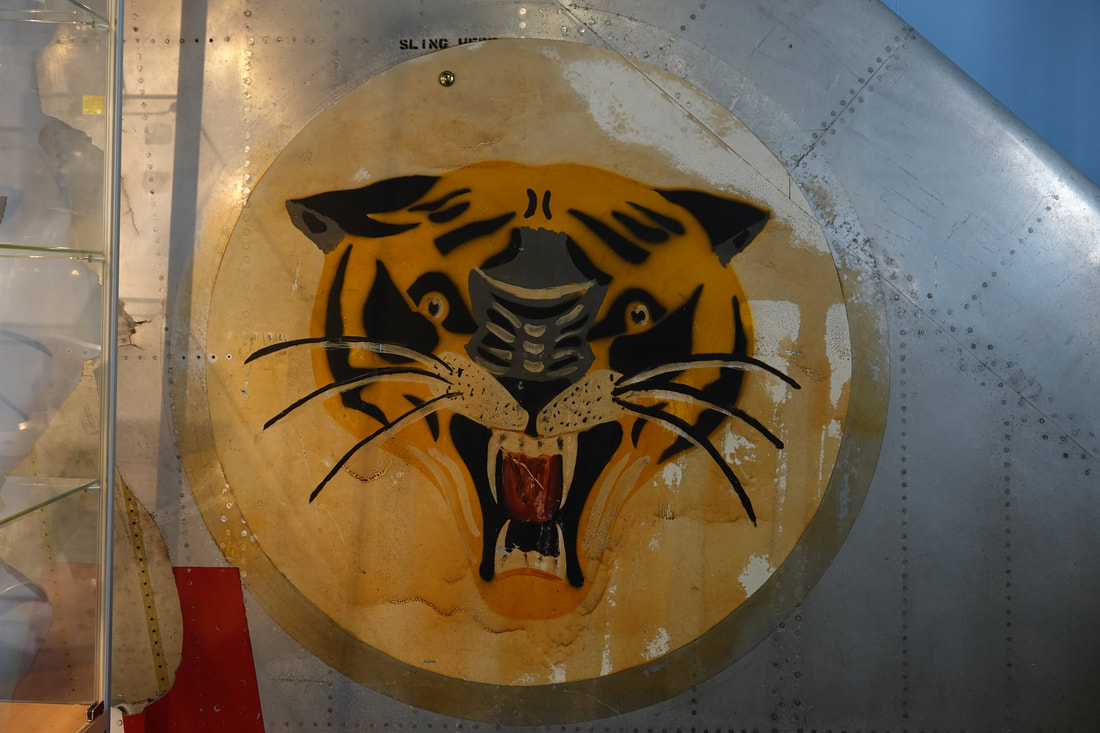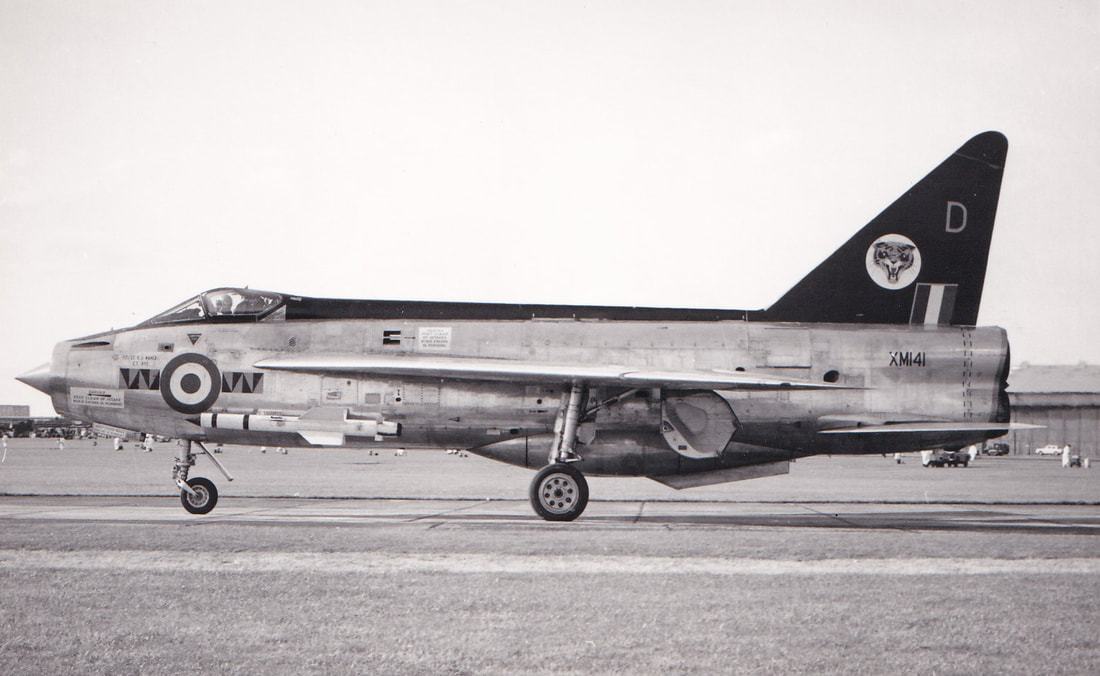Lightning F.1 XM141 - The Failure of a Fin
After many years of storage at Farnborough Air Sciences Trust, a rare and interesting exhibit has recently been put on display, the remains of the fin once fitted to Lightning F.1 XM141.
The aircraft first flew on 9 February 1960 in the hands of English Electric test pilot J. C. Hall. It was then delivered to 74 Squadron at RAF Coltishall on 29 August of the same year. On 16 May 1961, while being piloted by Flt Lt Jim Burns, XM141 was seen to be missing part of its fin and the entire rudder. He had been flying as part of a close formation finger four formation, practising a high-speed pass along Coltishall’s runway. Despite the damage, Burn’s successfully landed the Lightning and, after the incident, gained the nickname of ‘Finless Jim’. Until the failure, the aircraft had flown a total of 83 hours and 45 minutes. An investigation by English Electric concluded:
The prime cause of the accident was that Lightning XM141 sustained an aerodynamic load, which resulted in the structural failure of the fin and rudder. The aerodynamic load was most probably produced by the interaction between aircraft flying at high subsonic Mach number in close formation at low altitude.
Following this incident, all Lightning fins were strengthened, including XM141’s, which was repaired on-site by 71 Maintenance Unit. The aircraft was returned to 74 Squadron on 22 November 1961. In August 1963, the F.1 joined 226 Operational Conversion Unit at Coltishall and remained there until February 1965, when it was sent into storage at RAF Lyneham. A year later, the Lightning was declared a Non-Effective Airframe and was scrapped by B. A. Taylor of Bromwich in November 1966.
Although XM141 is long gone, it is hoped this superb artefact, resplendent with its original 74 Squadron Tiger head badge, will revive the memories of those who witnessed English Electric’s thoroughbred in action and inspire the ones who didn’t to learn more.
The aircraft first flew on 9 February 1960 in the hands of English Electric test pilot J. C. Hall. It was then delivered to 74 Squadron at RAF Coltishall on 29 August of the same year. On 16 May 1961, while being piloted by Flt Lt Jim Burns, XM141 was seen to be missing part of its fin and the entire rudder. He had been flying as part of a close formation finger four formation, practising a high-speed pass along Coltishall’s runway. Despite the damage, Burn’s successfully landed the Lightning and, after the incident, gained the nickname of ‘Finless Jim’. Until the failure, the aircraft had flown a total of 83 hours and 45 minutes. An investigation by English Electric concluded:
The prime cause of the accident was that Lightning XM141 sustained an aerodynamic load, which resulted in the structural failure of the fin and rudder. The aerodynamic load was most probably produced by the interaction between aircraft flying at high subsonic Mach number in close formation at low altitude.
Following this incident, all Lightning fins were strengthened, including XM141’s, which was repaired on-site by 71 Maintenance Unit. The aircraft was returned to 74 Squadron on 22 November 1961. In August 1963, the F.1 joined 226 Operational Conversion Unit at Coltishall and remained there until February 1965, when it was sent into storage at RAF Lyneham. A year later, the Lightning was declared a Non-Effective Airframe and was scrapped by B. A. Taylor of Bromwich in November 1966.
Although XM141 is long gone, it is hoped this superb artefact, resplendent with its original 74 Squadron Tiger head badge, will revive the memories of those who witnessed English Electric’s thoroughbred in action and inspire the ones who didn’t to learn more.
Source Information: English Electric Lightning Volume One, Birth of a Legend, Stewart Scott, GMS, 2000



